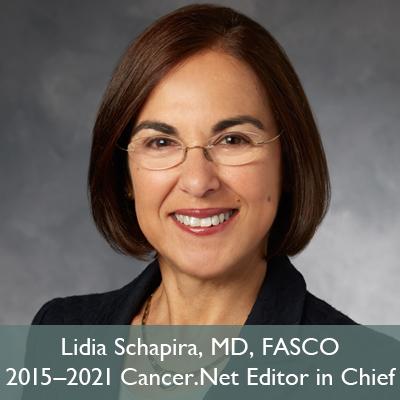
It is difficult to talk about pain. It can be impossible to find words to describe unpleasant or unbearable feelings and sensations. Pain is subjective and fluid. It may be incapacitating one moment and gone the next, or it can be a constant and unwelcome companion. Researchers who study pain understand this very well and consider pain when they design clinical trials. Some people believe that pain is a natural aspect of being human and are prepared to accept some pain for some time. For others, pain is frightening and devastating and something that must be extinguished using whatever means available.
For those who have lived with cancer, it is no surprise that cancer-related pain often continues for months or years after treatment has ended. A panel of experts convened by the American Society of Clinical Oncology (ASCO) recently published an important guideline on chronic pain in survivors of adult cancers. These experts performed an exhaustive review of the scientific literature and provided recommendations for management of chronic pain. I was surprised to read that as many as 40% of cancer survivors in the United States report living with chronic pain. This fact serves as an important reminder to all of us that being cured of cancer carries a high price. Similarly, the shadow of pain follows those living with cancer as a chronic illness, who have an uncertain future or face relapses and periods of remission.
What this means is that doctors treating people with cancer need to know about the chronic pain syndromes from cancer treatment. They need to be able to distinguish chronic pain from the signs or symptoms of a recurrence or a new disease. Doctors and cancer patients and survivors need to engage in a productive dialogue at every visit to uncover any causes or contributors to pain.  Then, they may come up with solutions that are acceptable and provide relief. For some survivors, this may mean using integrative therapies such as acupuncture and meditation; for others, it may involve working with a physical therapist to restore function in a joint or limb. And for some, treating pain may require a variety of medications. There is no single fix for persistent pain, but there needs to be a commitment from the cancer team (and preferably coordinated with the patient or survivor’s primary care physician) to work diligently until the symptom can be successfully managed.
Then, they may come up with solutions that are acceptable and provide relief. For some survivors, this may mean using integrative therapies such as acupuncture and meditation; for others, it may involve working with a physical therapist to restore function in a joint or limb. And for some, treating pain may require a variety of medications. There is no single fix for persistent pain, but there needs to be a commitment from the cancer team (and preferably coordinated with the patient or survivor’s primary care physician) to work diligently until the symptom can be successfully managed.
Pain management includes a number of interventions that can help restore well-being or make small improvements in a person’s quality of life. There is so much variation and personal perception when it comes to pain; this is why clinicians need to be sensitive to a person’s experience and history of pain when they develop a treatment plan. Patients with neuropathy from chemotherapy may need pain management for a year or more. Survivors who have had stem cell transplantation may face painful syndromes that are managed with lifestyle changes and chronic use of medications.
Doctors sometimes worry about the dangers that come with prescribing pain medications, so a collaborative approach is absolutely essential. Different approaches and medications should be tried. Treatment plans should be adjusted quickly in accordance to how well it does or does not work. And there should be little hesitation to provide referrals to clinicians whose expertise includes rehabilitation medicine, mind-body therapy, and pain management.
The ASCO guideline reminds us that cancer survivors are more than their cancer history or their pain—they are individuals with unique needs. Just as no 2 cancers are alike, each patient’s experience with pain is different as well. Fortunately, the cancer community is taking steps to learn how to deal with this in a compassionate and methodical fashion. I hope that these efforts will lead to significant improvements in the quality of life of cancer survivors, so that they may recover a sense of normalcy that feels so wonderful after the chaotic experience of diagnosis and treatment. 
